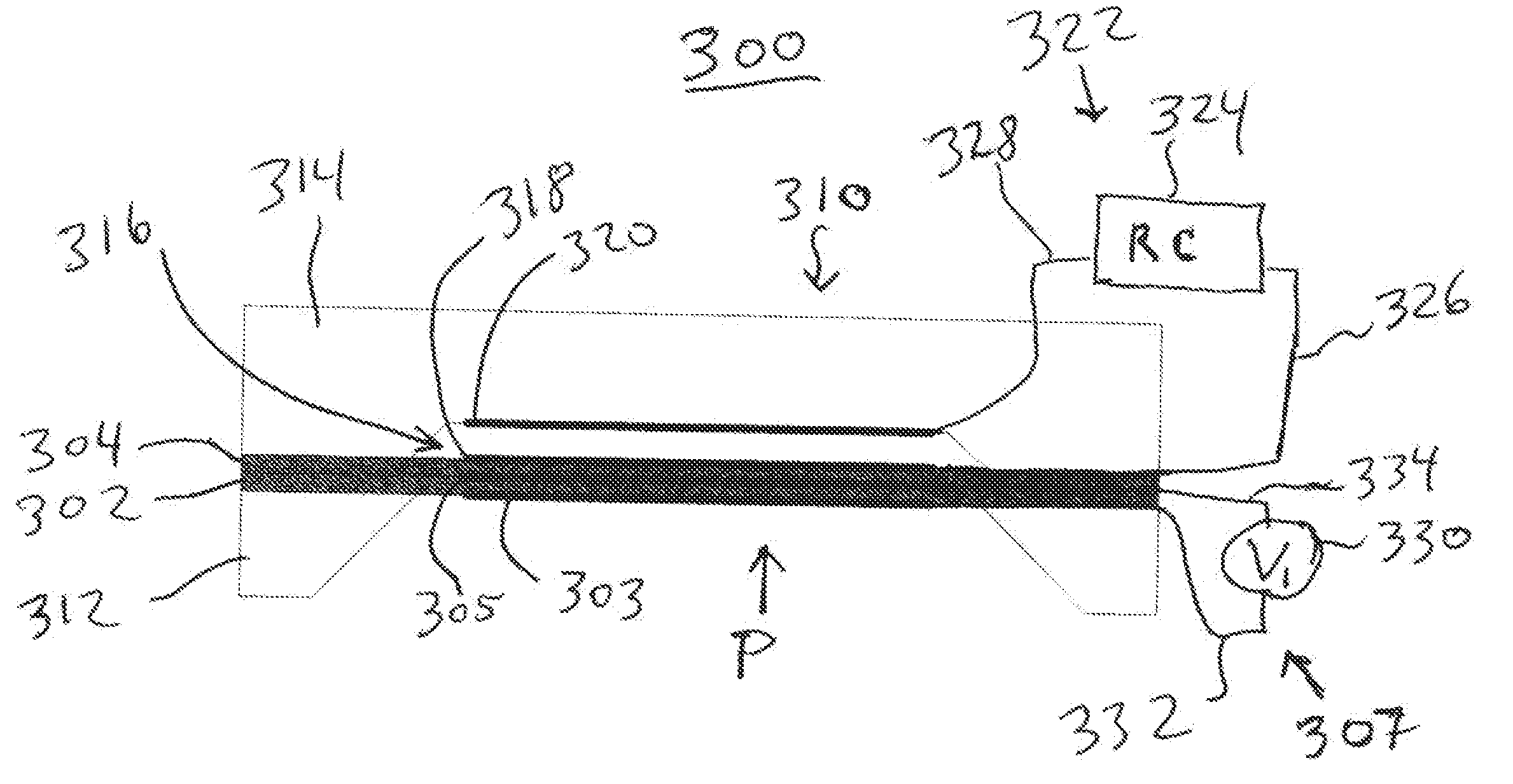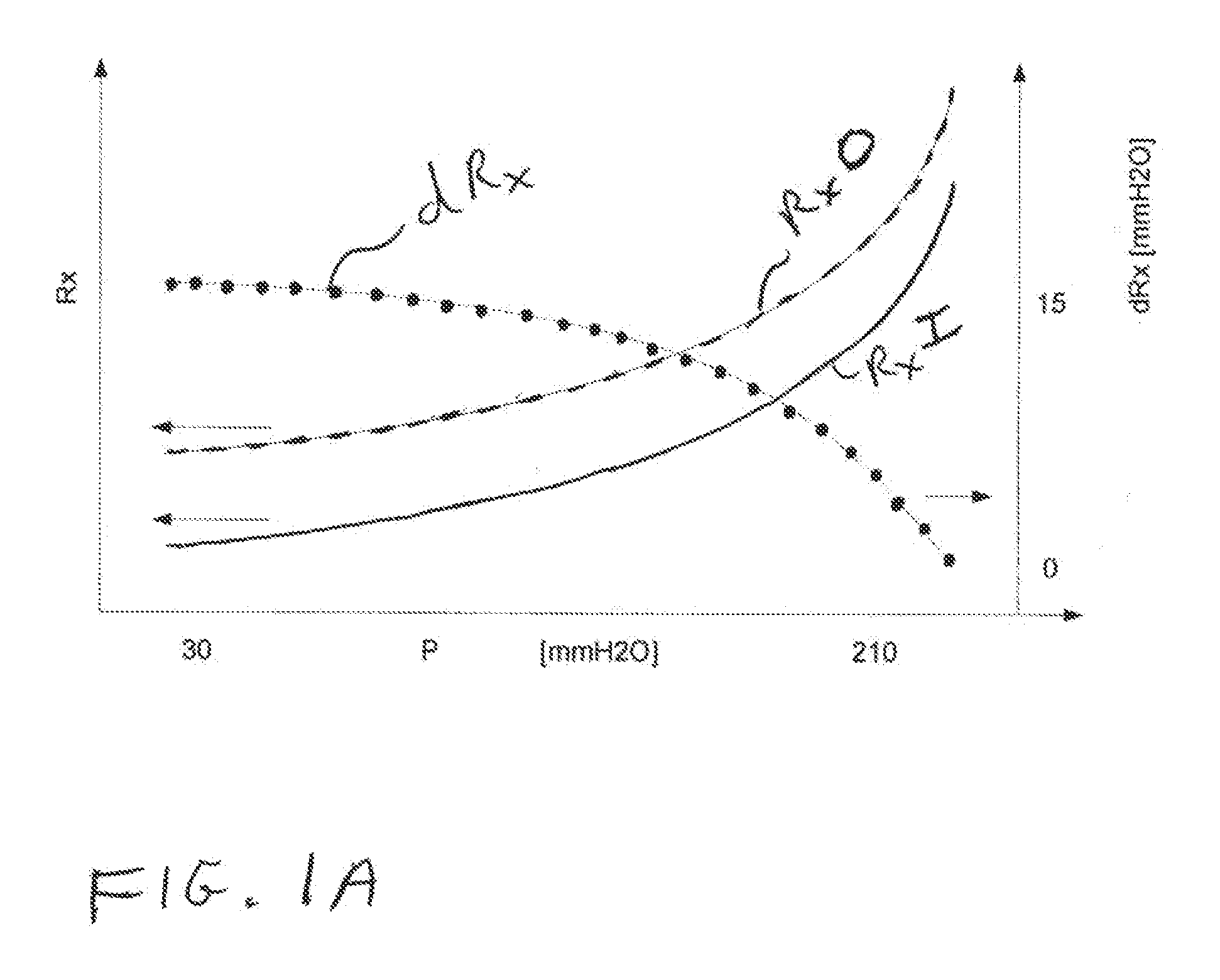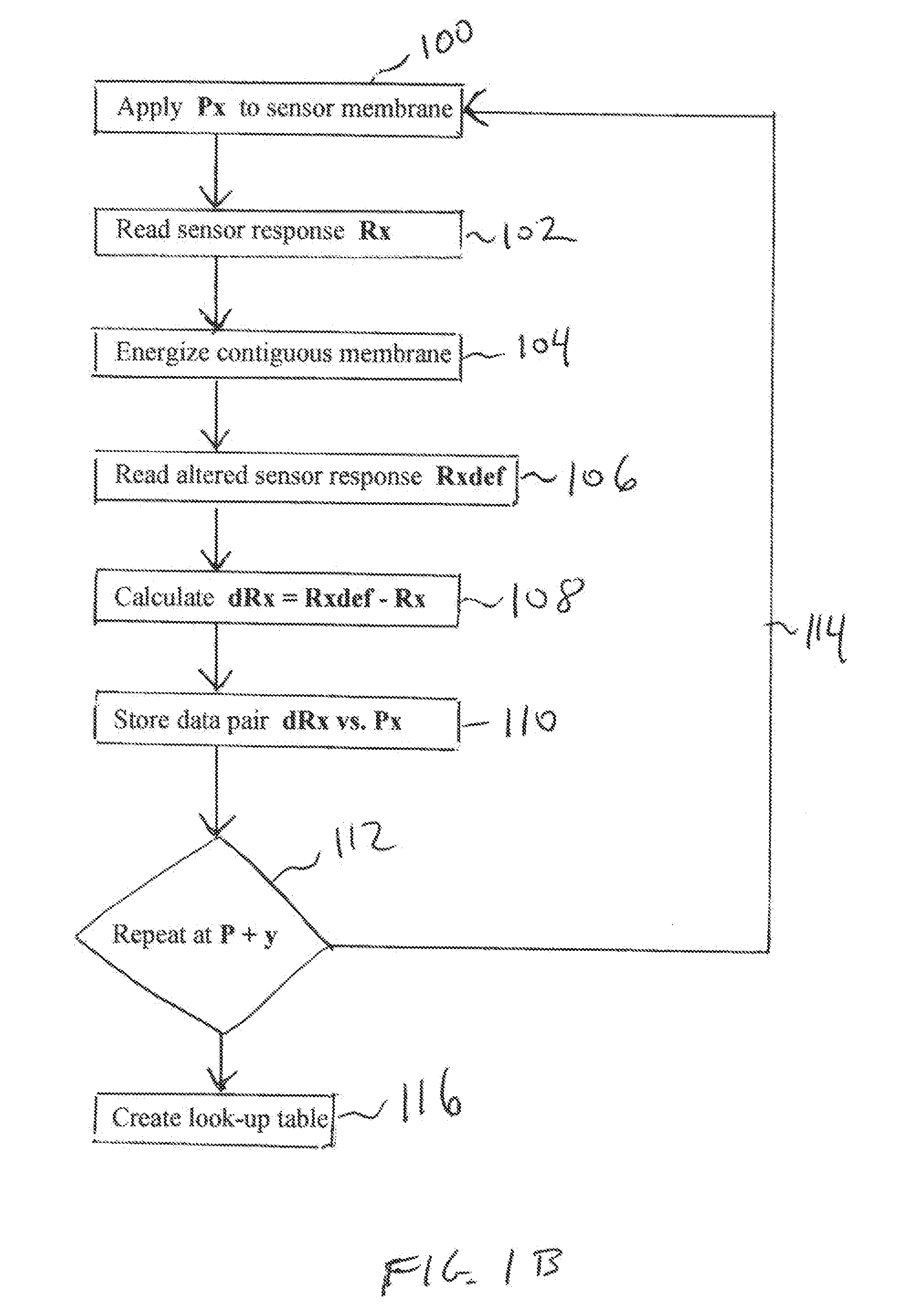In situ offset compensation for pressure sensors
a pressure sensor and offset compensation technology, applied in the field of pressure sensor output reading verification, can solve the problems of increasing the risk of false pressure reading, dramatic and unhealthy increases in intracranial pressure, and the brain cannot adapt to any increase in fluid volume, so as to minimize handling errors and accurate correction of sensors
- Summary
- Abstract
- Description
- Claims
- Application Information
AI Technical Summary
Benefits of technology
Problems solved by technology
Method used
Image
Examples
Embodiment Construction
[0036]Pressure sensors according to the present invention have a substrate and a first, deformable sensor membrane, partially supported by the substrate, which generates a first sensor reading when deformed by pressure. A second membrane is contiguous to the first membrane. When the second, contiguous membrane is energized, it deforms the first membrane to alter the first sensor reading.
[0037]A difference in the response of the pressure sensor with the second, contiguous membrane in an inactive, unenergized state and then in an active, energized state is first utilized under controlled pressure conditions, such as during production of the pressure sensor, to match actual pressures to a plurality of delta response values for that sensor. FIG. 1A depicts an example of an initial sensor response curve RxI, with pressures in mmH2O on the x-axis and obtained sensor readings Rx on the left-hand y-axis, while the second membrane is inactive. This corresponds to steps 100 and 102, FIG. 1B, ...
PUM
| Property | Measurement | Unit |
|---|---|---|
| pressure | aaaaa | aaaaa |
| capacitance | aaaaa | aaaaa |
| piezoelectric | aaaaa | aaaaa |
Abstract
Description
Claims
Application Information
 Login to View More
Login to View More - R&D
- Intellectual Property
- Life Sciences
- Materials
- Tech Scout
- Unparalleled Data Quality
- Higher Quality Content
- 60% Fewer Hallucinations
Browse by: Latest US Patents, China's latest patents, Technical Efficacy Thesaurus, Application Domain, Technology Topic, Popular Technical Reports.
© 2025 PatSnap. All rights reserved.Legal|Privacy policy|Modern Slavery Act Transparency Statement|Sitemap|About US| Contact US: help@patsnap.com



